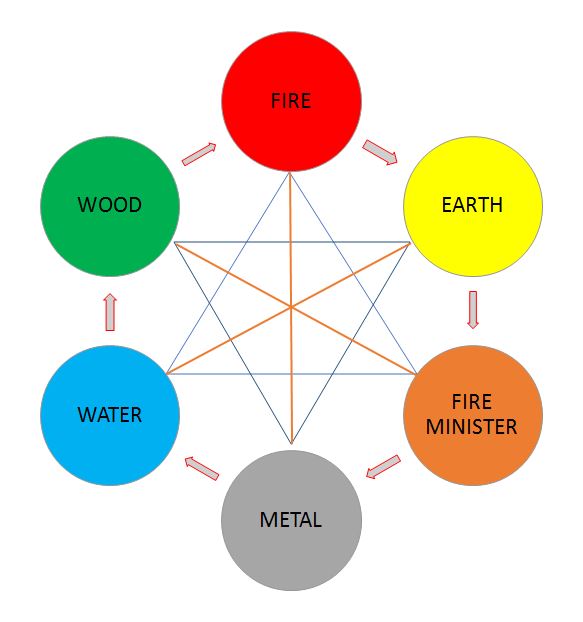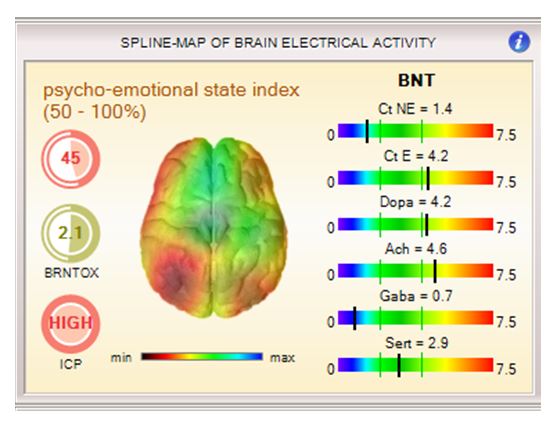Michael Kessler, DC, CCSP
Javdat Karimov, MD, NMD
In the last 3 installments of this article, we explained the basics of heart rate variability (HRV). As a reminder, HRV is a reflection of the autonomic nervous system (ANS), which is comprised of 2 branches – the sympathetic and parasympathetic; together, they control 90% of the body’s functions. The ANS regulates the slowing and speeding up of the heart rate through its influence on the sinoatrial node of the heart.
We explained in the previous articles that in advanced HRV we break down the ECG into its individual frequency spectral bands – low frequency (LF), high frequency (HF), and very low frequency (VLF) – and that these frequencies have been found through extensive research to correspond to specific doshas in Ayurvedic medicine. The frequency spectrum was derived from the initial Fast Fourier Transform analysis (which facilitates conversion between time/space and frequency). This also gives us a window into how the LF, HF and VLF bands correspond to the specific elements in Chinese medicine and the associated meridians. This article touches on a new theory that has been developed by Global Health Solutions, LLC, which is clinically relevant and can be empirically observed and objectively quantified using advanced HRV. As with all new approaches to health and healing, we want to acknowledge those individuals whose research into the regulatory systems of the body provided much the groundwork for this theory: R. M. Baevsky, A. H. Fleischman, I. G. Nidekker, S. Akselrod, Sergey Fedotov, and Alexander Samohotsky.
Combined Ancient Healing Arts & HRV
Dr Karimov has combined the science of Ayurveda, Tibetan medicine, and Traditional Chinese Medicine (TCM), and with Dr Kessler has made crucial observations that led to the design of the map shown in Figure 1.1 In private practice, this map can provide keen insight into what is going on with your patients and whether your therapies are effective or not.
We will first break down each area of this map. In terms of spectral analysis and the 3 doshas, LF represents sympathetic nervous system (SNS) activity, and is associated with the Pitta dosha, as well as the Fire element and the Wood element. VLF represents neurohormonal regulation, and is associated with the Vata dosha, as well as the Water element and the Metal element. HF is primarily represents parasympathetic activity, and is associated with the Kapha dosha and with the Earth element and the Fire Minister element.

Ancient Eastern healing arts, such as Ayurvedic, Tibetan, Chinese, Korean, etc, all use similar principles to evaluate health. What we will show you using HRV is how these ancient philosophical principles equate to functional medical thinking today. In classical TCM, it has always been taught that there are 5 elements. Dr Karimov felt that this was incomplete – that there are actually 6 elements, with the sixth element being mysteriously left out over the ages.2 The concept of 6 elements makes sense from a mathematical perspective, ie, from the study of natural patterns in the universe such as fractals and the golden ratio. The sixth element represents the Triple Warmer and Pericardium meridians, and influences the other 5 elements. It is classified as a warm element, and one of its jobs is to control excess heat in the body. We call this sixth element the Fire Minister and place it between the Earth and Metal element, as shown in Figure 1.
In terms of clinical presentation, the Fire element reflects inflammation, with excess heat building up in the body. The Triple Warmer (TW) and Pericardium (PC) attempt to bring the heat down and, in so doing, can become imbalanced.3
Relationships between Elements, Neurotransmitters, & Hormones
As part of this unique view of the meridians, we have assigned a neurotransmitter to each element (Figure 2). Let’s start with the catecholamine, dopamine. Dopamine is associated not only with brain function, but with kidney function as well. This is why we see kidney dysfunction with Parkinson’s disease. Dopamine increases glomerular filtration in the kidney (a normal process) by affecting the juxtaglomerular apparatus; this, in turn, triggers the production of the renin-angiotensin hormones. In clinical situations where dopamine is low and the juxtaglomerular cells are stimulated, the increased renin production is often associated with hypertension.

(BNT=brain neurotransmitters; NE=norepinephrine; E=epinephrine; Dopa=dopamine; Ach=acetylcholine; GABA=gamma-aminobutyric acid; Sert=serotonin; BRNTOX=brain toxicity; ICP=intracranial pressure)
Dopamine is sometimes used in the hospital setting to increase glomerular filtration when blood pressure and kidney perfusion are diminished. Dr Karimov linked the mineral, sodium (Na+), to the Water element. When he was assigning the relationships of the neurotransmitters, it made sense to link dopamine to this element, since it is involved with Na+ channels and is associated with the kidneys. From a TCM perspective, a patient presenting with exhaustion and fatigue could have a deficient Kidney meridian. Kidney Jing is the vital energy source in Chinese medicine. In functional medicine, this would be akin to adrenal fatigue. We know that depleted adrenals are associated with low aldosterone and an excretion of sodium from the body, as well as a decrease in DHEA. Because the signs and symptoms of adrenal fatigue are reflected in the Water element, we have assigned dopamine as the neurotransmitter, Na+ as the mineral, and DHEA as the hormone for this element.
Another important observation is that sodium initiates the action potential in the heart muscle cells. This action can be seen by the amplitude of the R wave seen on the heart rate variability, and dopamine is involved in this process. With a deficient Water element, the amplitude of the R wave is usually diminished.
With the Metal element, we assigned serotonin as the neurotransmitter, estrogen as the hormone, and calcium as the mineral. Deficiency of this element can manifest in women as dryness, depression, mood swings, and constipation. This is a typical Vata dosha pattern. Conversely, a female with symptoms of estrogen excess may be experiencing an elevation in the Metal element. With this pattern, we will often also see a depleted Wood element. The Wood element is associated with pregnenolone as its hormone, and we know it can be converted into progesterone to counter the effects of excess estrogen production. We all know that the liver’s job is detoxification and, in this case, we are talking about estrogen clearance. By knowing the deficiencies and excesses of the elements in Chinese medicine, we can get a better feel for what is happening in the overall functional physiology of the body.
The Metal element is associated with the large intestine, and we know that serotonin is mostly produced in the gut. Research on the microbiome has shown that specific bacteria are capable of influencing mood and neurotransmitter production. As part of the gut-brain connection, the bacteria send information to the brain via the parasympathetic nervous system. We can enhance this process by improving parasympathetic tone, using the special, customized breathing program in advanced HRV, as well as diet and therapies geared toward modulating serotonin and the microbiome in the large intestine.
The Wood element is involved with the Pitta dosha and the Liver/Gallbladder meridians. The associated neurotransmitter is GABA, and the associated hormone is pregnenolone (and its downstream progesterone). The associated chemical element is the hydrogen ion (H+), which equates with an acid pH. The hydroxide ion (OH-) was assigned to the Fire Minister. An excess Wood element causes the Fire Minister to become depleted as it gives up OH- to combat the excess H+. We have already talked about the Wood element, as far as detoxification is concerned.
The Pitta dosha is also associated with the Fire element and with the Heart and Small Intestine meridians. The hormone we assigned to this element is cortisol and the neurotransmitter is epinephrine. Interestingly, when the Pitta dosha is out of balance, there is a tendency for heart problems and ulcers. The mineral associated with this element is potassium (K+).
The Earth element is associated with the Kapha dosha, and the Stomach and Spleen are the meridians for this element. It is not surprising that the hormone involved is insulin. In Ayurveda, an imbalanced Kapha dosha increases one’s predilection for diabetes. The neurotransmitter is acetylcholine and influences brain speed. When out of balance, the Kapha type can be very sluggish and slow. The associated mineral is magnesium.
The Fire Minister is also associated with Kapha, and the associated meridians are the Pericardium and the Triple Warmer. These paired meridians are highly involved with the thyroid hormones, the neurotransmitter norepinephrine, and the hydroxide ion. When the Fire Minister is depleted and you see the Thyroid Function Index (as seen in the HRV screens) pushed to the hypothyroid side of the equation and the Inflammatory Index on the high side (as seen in the HRV screens), think possible hypothyroid. If you observe this pattern going back and forth from one extreme to the other, suspect an autoimmune problem such as Hashimoto’s. More research is needed to confirm this finding, although I have seen this pattern in individuals with Hashimoto’s and associated lab tests (eg, T4, T3, TSH, thyroid antibodies), and it matched the findings on the advanced HRV readings.
Significance of Minerals and the 6 Elements
The reason we assigned potassium to the Fire element is because the Fire element is related to the Heart meridian. K+ is important for the repolarization of the membrane and is seen on the ECG as the T wave. Because K+ is the main mineral inside the cell, a depleted Heart meridian may present clinically as an arrhythmia.1,3
As mentioned, magnesium is linked to the Earth element. Increasing magnesium causes an accumulation of dampness. This is why magnesium is related to the gastrointestinal tract and, in this case, the Stomach and Spleen meridians. Magnesium and potassium function like brothers, in that they help each other to maintain balance inside the cell membrane. Together, magnesium and potassium enter the cell (magnesium first, followed by potassium) and initiate the repolarization that we see as the T wave on the ECG. We know that magnesium helps with muscle relaxation and calms the nervous system, which is consistent with the balancing effect of the Earth element. There is evidence in the literature that magnesium reduces inflammation and, from a TCM perspective, can oppose the excess Fire element that may be associated with inflammation.4,5
The mineral associated with the Metal element is calcium. When we talk about calcium, we should think of dryness. When people take too much calcium, they develop dryness that might appear clinically as constipation. What we need is a balance of Earth and Metal, or dampness and dryness.
According to Dr Alexander Samohotsky,3 the various mineral pumps drive the energy through the meridians. There is the calcium/magnesium pump, the sodium/ potassium pump, and the hydrogen ion/hydroxide ion pump. We have the Water element (Na+) controlling the Fire element (K+). The kidneys control the Fire element. If the Water element becomes depleted, the Fire element will become excessive. This gives you some clinical tools to think about. You need the right balance of Na+ and K+, and advanced HRV can give you indications about this.3
Closing Comments
We have just touched on the connections between Western and Eastern medicine, as observed in the advanced HRV system. Space doesn’t allow us to explain everything related to our ongoing observations in this area. For more information, please contact Global Health Solutions, LLC, at www.hrvhq.com. You can also reach Dr Karimov or Dr Kessler at (415) 646-6112.
Over the past 5 years, we have observed many of the patterns we have talked about in this paper. The research is ongoing. Advanced HRV is not designed for diagnosis; rather, it is purely an educational and research tool.

Michael Kessler, DC,CCSP, has 25 years clinical practice, with a primary focus on nutritional and energetic therapies. He is highly experienced in the integration of advanced healing methods, systems and devices. Dr Kessler is the author of 4 books published through Lombardi Press: The 8-Day Detox Breakthrough; The New Medicine Cure; Doctor’s Home Remedies That Work; and New Breakthroughs in Natural Pain Healing. He has also written articles on a monthly basis for several years for a health newsletter for Lombardi. Dr Kessler has taught numerous workshops on a variety of topics for Designs for Health, Biotics Research, and Nutrienergetics Systems, and has lectured for the Academy of Complementary and Integrative Medicine. He currently teaches individual practitioners how to integrate a variety of modalities into their practices to help localize the core imbalances that are contributing to their patients’ health problems.
 Javdat Karimov, MD, NMD, is a naturopathic physician with an MD background (Russia) in anesthesiology and emergency medicine. He graduated from National College of Naturopathic Medicine in 2003, and since then has maintained a private practice in Portland, Oregon. Dr Karimov has over 20 years of clinical experience focusing on cardiology, Eastern medicine (Traditional Chinese Medicine), Ayurveda, Tibetan and Quantum healing. Dr Karimov is actively involved in researching the health benefits of quantum medicine. In addition to his clinical work, Dr Karimov is CEO of Global Health Solutions, where he designs and sells assessment tools for the healthcare practitioner.
Javdat Karimov, MD, NMD, is a naturopathic physician with an MD background (Russia) in anesthesiology and emergency medicine. He graduated from National College of Naturopathic Medicine in 2003, and since then has maintained a private practice in Portland, Oregon. Dr Karimov has over 20 years of clinical experience focusing on cardiology, Eastern medicine (Traditional Chinese Medicine), Ayurveda, Tibetan and Quantum healing. Dr Karimov is actively involved in researching the health benefits of quantum medicine. In addition to his clinical work, Dr Karimov is CEO of Global Health Solutions, where he designs and sells assessment tools for the healthcare practitioner.
References
- Dudin SA, Tsydypov Ch Z. Pulse Diagnosis in Tibetan Medicine. (Russian) Buryat Institute of Natural Sciences, Siberian Department of the Academy of Sciences in the USSR; the Buryat branch. Scince; 1988.
- Xue ZY. Basic Theory of Chinese Medicine: Five Rotations, Six Energies. Translation and commentary by Bogachihin MM. Moscow: Aslan Publishing.; 1994.
- Fedotov S. Five Factors of Cell’s Metabolism (Oriental philosophy in light of Western knowledge). Vladivostok, Russia: Pulse Academy. Available at: http://pulse-academy.org/share/manual/Five_factors_EN.pdf. Accessed September 1, 2014.
- Nielsen, FH. Effects of magnesium depletion on inflammation in chronic disease. Curr Opin Clin Nutr Metab Care. 2014 Jul 11. [Epub ahead of print]
- Nielsen FH. Magnesium, inflammation, and obesity in chronic disease. Nutr Rev. 2010;68(6):333-340.





